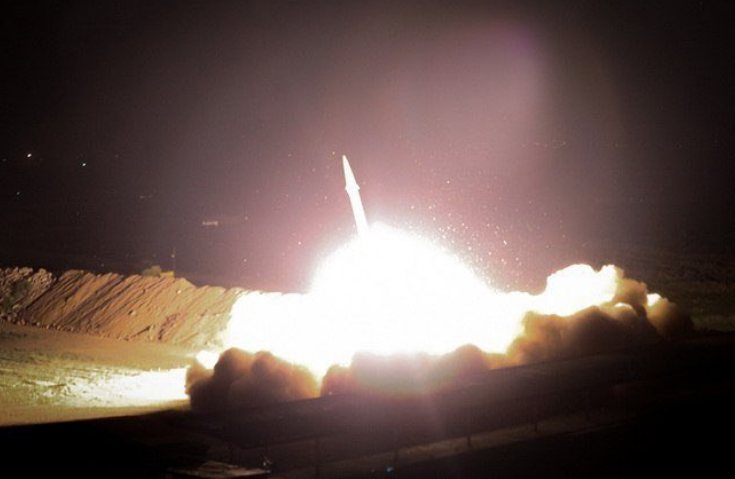
The Pentagon has warned Beijing after the latter test-launched ballistic missiles during military exercises in the South China Sea, saying that it further destabilized the situation in the already contested waters.
“Conducting military exercises over disputed territory in the South China Sea is counterproductive to easing tensions and maintaining stability,” said the Pentagon in a statement issued Thursday, August 27.
In the statement, the Pentagon said that China test-fired the missiles around the Paracel Islands, one of the disputed archipelagos in the region. It did not, however, specify the exact date of the test, the type of missiles that were launched or how many.
Nuclear-capable missiles tested
On Thursday, Japanese media giant NHK reported that China fired four ballistic missiles toward the South China Sea on Wednesday, citing unnamed U.S. military sources. According to the report, the missiles fell between China's Island Province of Hainan and the Paracel Islands.
A similar report from the South China Morning Post, this time citing an unnamed source from within the Chinese military, stated that Beijing fired only two missiles: a DF-26B missile and a DF-21D missile.
The DF-26B, according to the Pentagon's 2019 annual report to Congress, is a nuclear and conventional capable missile with a 4,000 km (2,485 miles) range. The DF-21D, on the other hand, is an anti-ship ballistic missile with a range of 1,500 km (932 miles) according to the same report.
In its statement, the Pentagon called out Beijing for using the exercises – conducted by China's People's Liberation Army from August 23 to 29 – to further assert its “unlawful” claims and threaten its neighbors who also have competing claims in the South China Sea.
“This military exercise is the latest in a long string of PRC [People’s Republic of China] actions to assert unlawful maritime claims and disadvantage its Southeast Asian neighbors in the South China Sea,” the Pentagon said.
In addition, the Pentagon confirmed Thursday that the guided-missile destroyer USS Mustin conducted “routine operations” near the Paracel Islands to ensure a “Free and Open Indo-Pacific.”
Chinese officials, on the other hand, have remained quiet about the launches. During a daily briefing on Friday afternoon, Chinese Foreign Ministry spokesperson Zhao Lijain did not comment on the Pentagon's statement. Zhao, however, accused the U.S. of being the “destroyer and troublemaker” of the South China Sea's stability.
Meanwhile, in a press conference the day before, Chinese Ministry of National Defense spokesperson Wu Qian stated that the exercises were “not directed at any country.” Wu, however, made no mention of the missile launches.
Beijing’s South China Sea claims
China has been steadily building up its military presence in the South China Sea – something that has raised tensions with its neighbors.
Aside from China, countries such as Brunei, Indonesia, Malaysia, the Philippines, Taiwan and Vietnam all have competing claims in the region.
China's claim is based on what it calls the “nine-dash line,” an undefined and vaguely located demarcation line that China and Taiwan use to claim a major part of the South China Sea. The line comes from early maps, first produced by Chinese geographer Yang Huairen in 1947.
The maps claim to acknowledge China's historical control of the islands in the South China Sea, including the Paracels. Experts have countered, however, saying that there is little evidence that China controlled the South China Sea after the mid-17th century.
“Indeed, after a burst of seafaring exploration during the Ming dynasty, China’s emperors largely shut their empire off from the seas,” said Wang Ying, a Chinese marine geographer and student of Yang.
As a consequence, she argued that there is scarce cartographic proof of China's rights over the disputed waters.
The shaky ground on which China is staking its claims has helped its rivals with their own claims.
In 2016, a tribunal at the Permanent Court of Arbitration at The Hague ruled in favor of the Philippines regarding a claim it brought against China under the United Nations Convention on the Law of the Sea (UNCLOS) covering the Spratly's – another archipelago in the region similar to the Paracels. As part of the ruling, the tribunal stated that “there was no legal basis for China to claim historic rights to resources within the sea areas falling within the ‘9-dash line.’”
Despite the ruling, China has continued its military build-up in the region, forcing the U.S. to step in.
To keep China in check, the U.S. now routinely conducts “Freedom of Navigation Operations” – such as the one conducted by the USS Mustin – in the South China Sea. In addition, it recently imposed sanctions on companies and individuals involved in the construction of Chinese military facilities in the disputed waters – a move that Beijing has protested by ironically citing international law.
Sources include:
Please contact us for more information.














